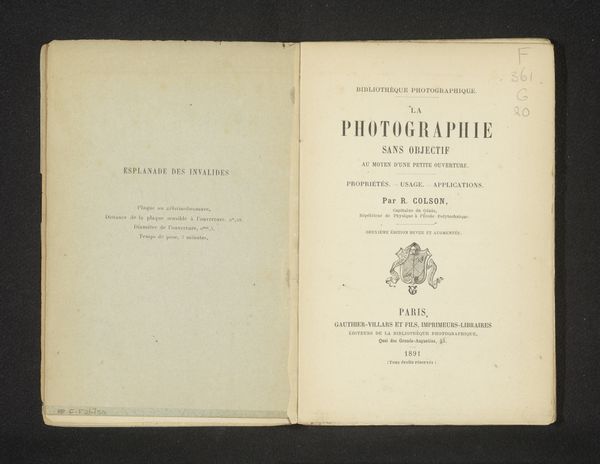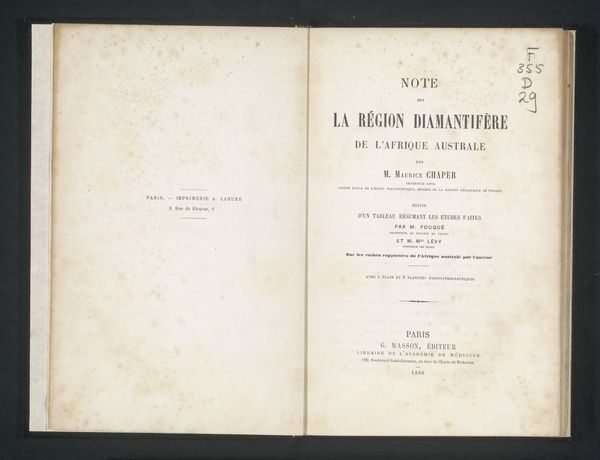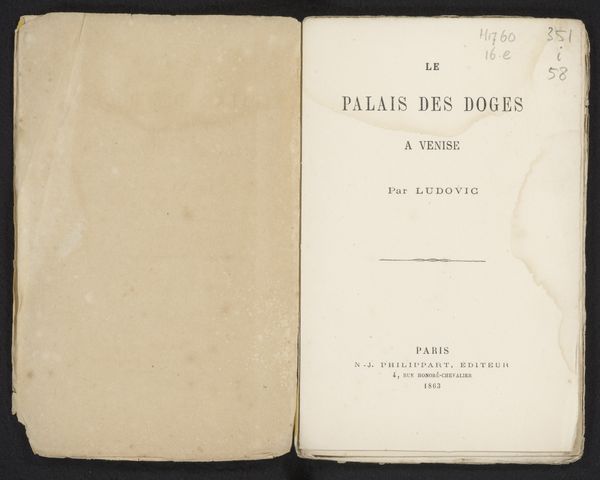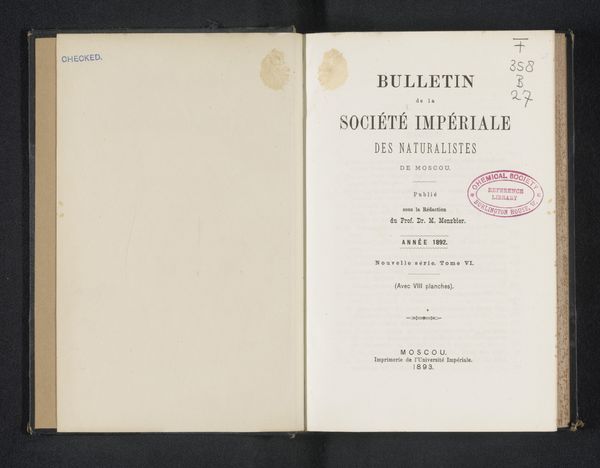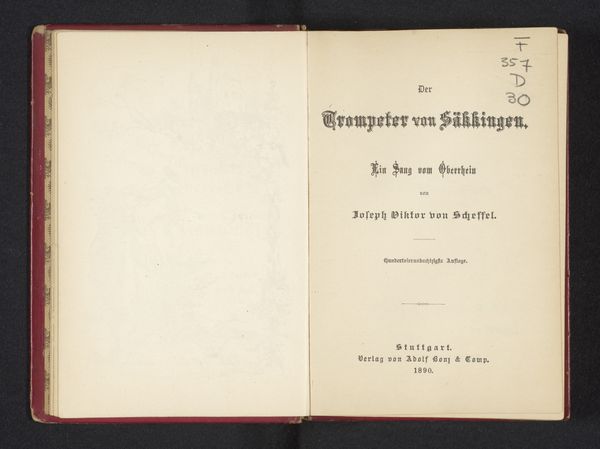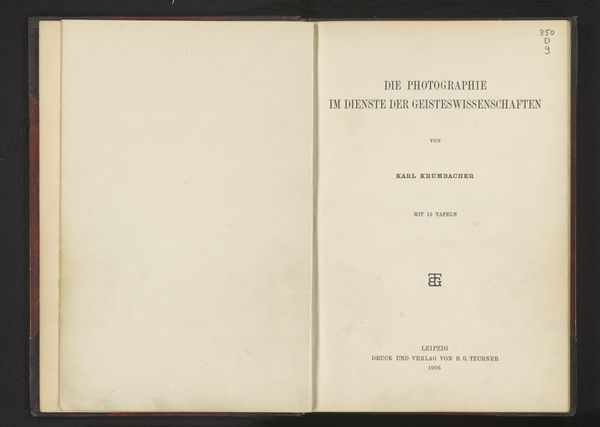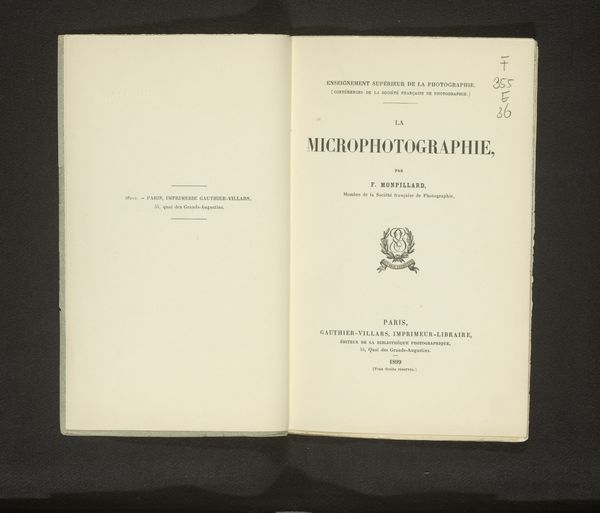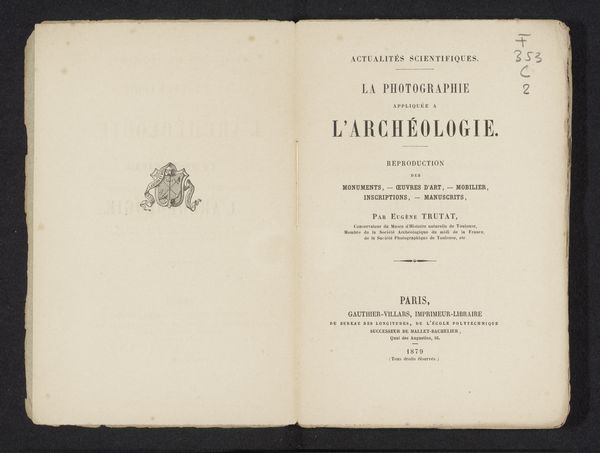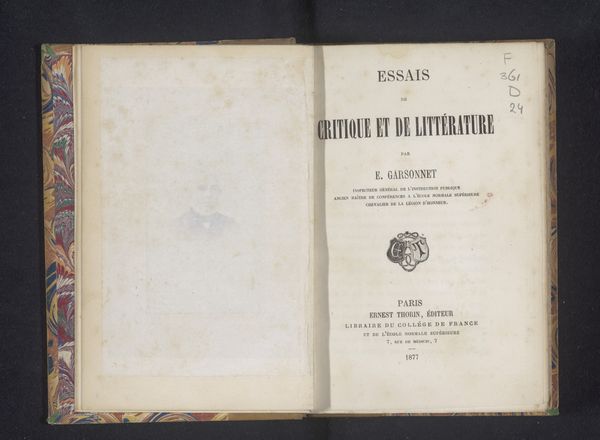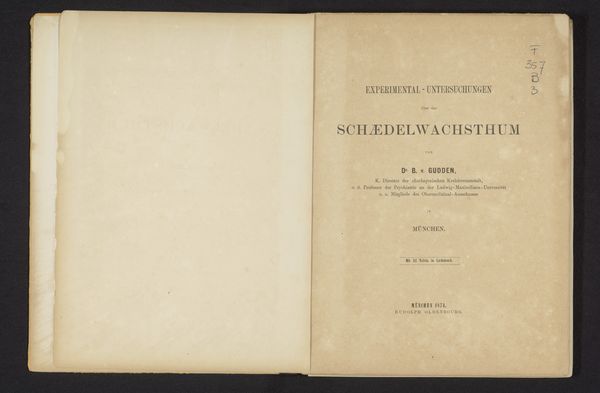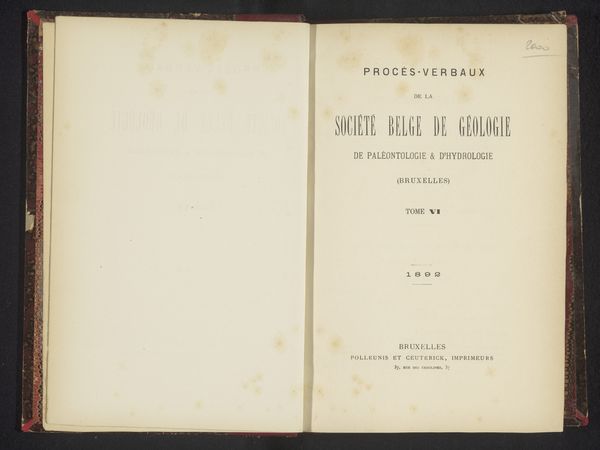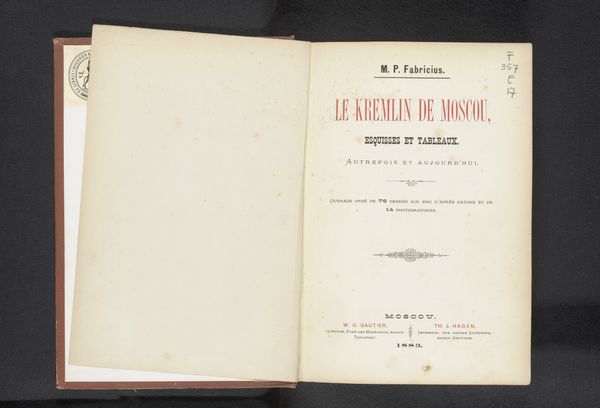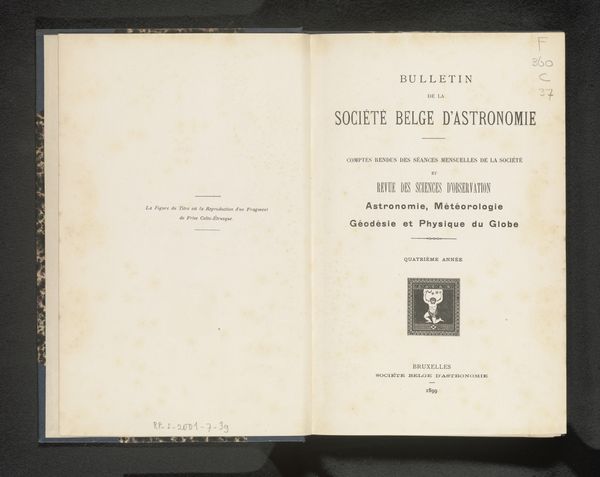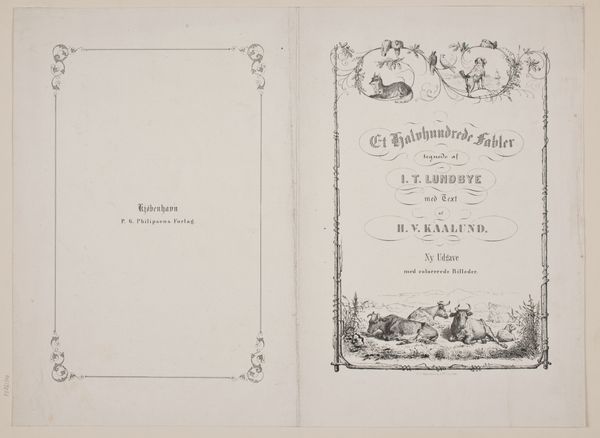
Daedalus; or, the causes and principles of the excellence of Greek sculpture 1860
0:00
0:00
print, paper, typography, engraving
#
script typeface
#
aged paper
#
script typography
# print
#
hand drawn type
#
hand lettering
#
paper
#
typography
#
hand-drawn typeface
#
thick font
#
history-painting
#
handwritten font
#
golden font
#
academic-art
#
engraving
#
historical font
Dimensions: height 250 mm, width 160 mm, thickness 40 mm
Copyright: Rijks Museum: Open Domain
Editor: So, this is “Daedalus; or, the causes and principles of the excellence of Greek sculpture,” a print by Edward Falkener from 1860. It's the title page of a book, really. I'm struck by how…clean it is, despite being so old. What jumps out at you? Curator: The serenity, wouldn’t you say? There’s a stillness in the very layout. And consider the fonts! A symphony of serifs, a dance of thin and thick strokes. Notice the almost reverent way the main title floats, almost like an inscription on a temple. Falkener wasn't just presenting information; he was creating an experience, an initiation into the world of classical art. Do you see that little vignette there? Editor: Yes, just below the author's name. It seems to depict figures, maybe a sculptor and his subjects? Curator: Precisely! A miniature stage setting, encapsulating the core theme of the book. Falkener knew that words alone couldn’t capture the essence of Greek sculpture; he needed to give us a visual taste, a hint of the divine made tangible. Now, what does this say about the Victorians and their view of the Greeks, do you think? Editor: Maybe that they saw them as the pinnacle of artistic achievement, something to be studied and emulated? Curator: Indeed! Falkener isn’t merely writing about Greek sculpture, he's holding it up as a model, a standard of excellence for his contemporaries. It's like he is saying "Look back to the Greeks, for there you will find the keys to unlock the mysteries of beauty and truth!". Editor: That’s fascinating. I initially saw just a book title, but now I see it as a cultural statement, a window into Victorian ideals about art and history. Curator: Isn’t it wonderful when art history becomes a detective story? We've just scratched the surface! Now you’re speaking the language of the ancients.
Comments
No comments
Be the first to comment and join the conversation on the ultimate creative platform.
